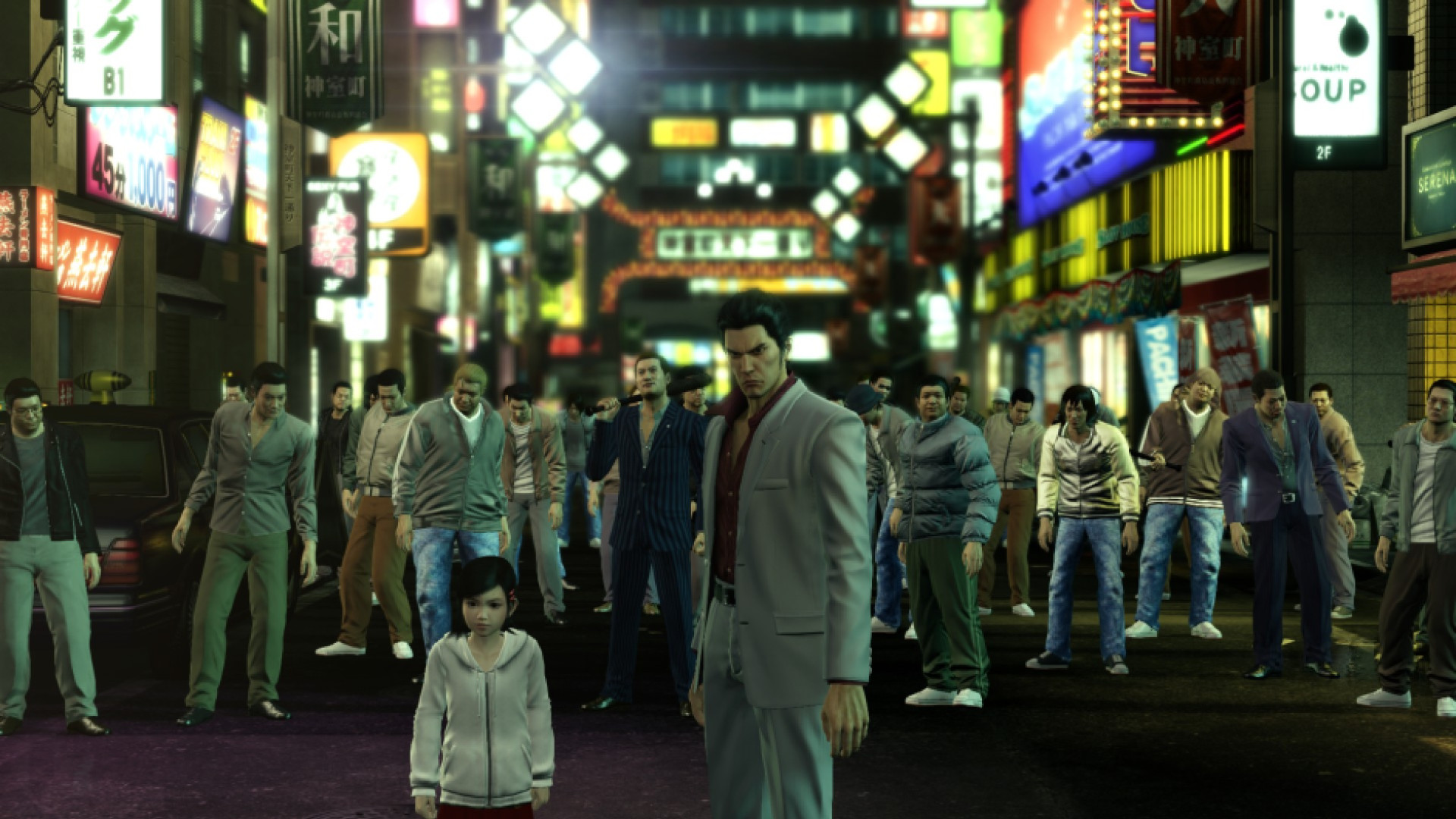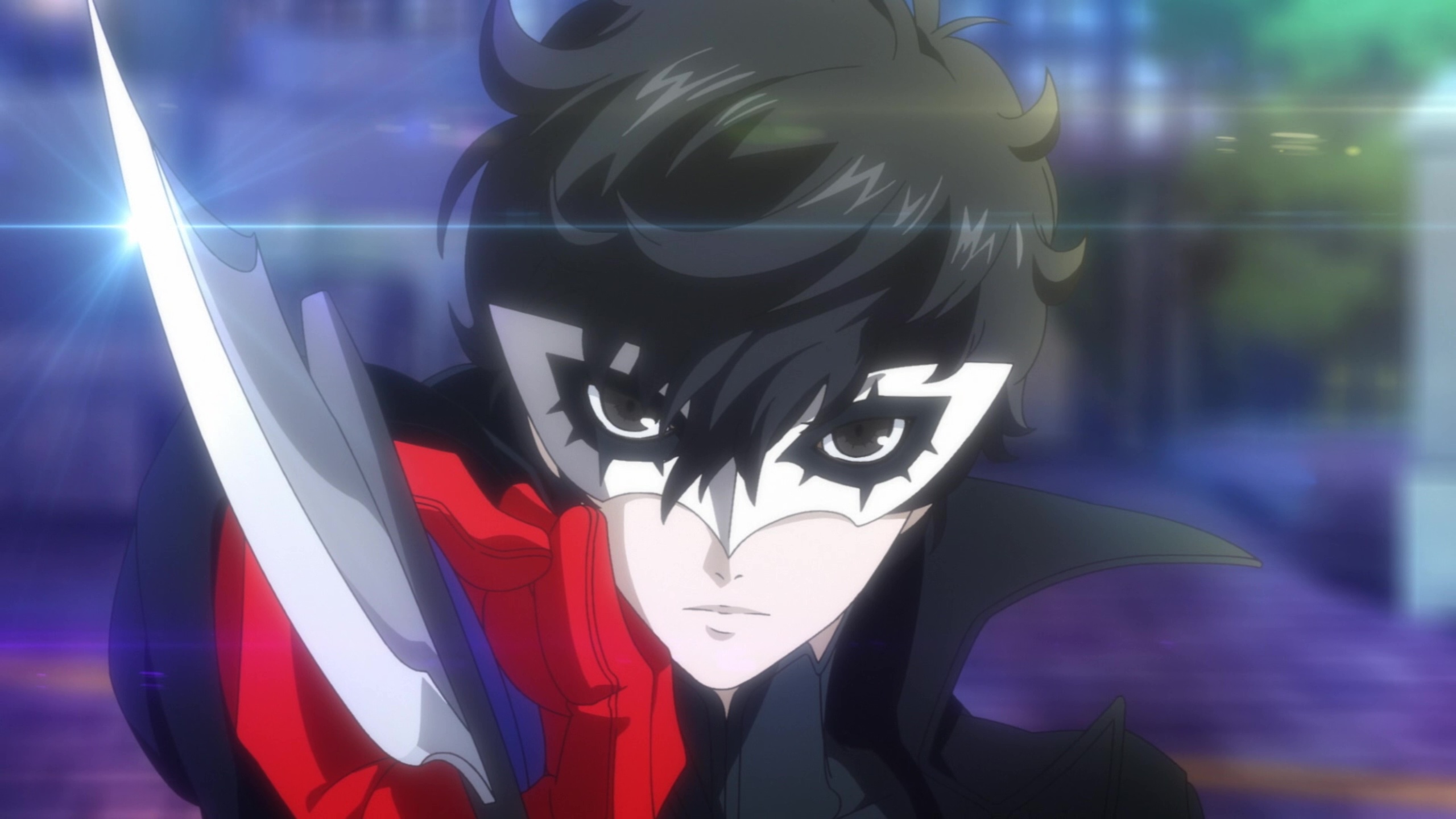What makes a great anime game?
It's more than just big eyes.

We're inundated with anime games on PC. From erotica featuring doe-eyed waifus on Steam to games that are based on actual TV shows like Dragon Ball FighterZ—and games that just feel like anime, such as the Yakuza/Like a Dragon series—there are a lot of different ways to interpret the term.
So what makes a game "anime", even if it doesn’t sport the distinct look of Japanese cartoons? And more importantly, which traits do the best of those games have in common? Read on for a recipe with all the key ingredients of a great anime game.
Going beyond genre

Anime games are much bolder about playing with established genres. The most famous example of this is probably the Final Fantasy series—even Final Fantasy games with a high fantasy setting aren't shy about throwing steampunk elements into the mix, like Final Fantasy 6. Games with a modern setting like Final Fantasy 15, meanwhile, don’t see anything wrong with having characters shouldering giant swords on their way to the instant noodle truck.
Anime games can take us to completely new worlds, and within those worlds, anything is possible. Even if it doesn't make a whole lot of sense—you can simply say "that's anime logic for you" and move on.
Action-packed animation

Anime, particularly action-orientated anime, really needs striking animation. This doesn't necessarily mean making animation smoother. What really matters is making it memorable through effects or exaggerated poses. Anime games are inspired by a 2D medium, and one known for its expressiveness.
The fighting games developed and published by Arc System Works, such as BlazBlue: Cross Tag Battle, all exemplify that it's not enough for an anime game to have characters who look 2D—they have to translate their kinetic energy as well. Hits need to have a strong, visible impact, as does landing after a high jump. Magic discharges with flashes of bright colours, speed lines create the feeling of movement, and characters seem to warp their limbs when doling out heavy attacks. The more exaggerated the action looks, the more alive it feels.
All the emotion

Why do the Yakuza/Like a Dragon series, a set of games that began with a simple boulder of a man as their protagonist, feel like anime games? For Western players, it might partly feel that way because we get to explore Japanese locations many of us first encountered in anime. But Yakuza has a few things in common both with anime and other Japanese media—apart from its unending love of food, it's also just a very emotional series.
Keep up to date with the most important stories and the best deals, as picked by the PC Gamer team.
In Japanese society, loudly proclaiming your true feelings is still largely frowned on, so part of the enjoyment of made-up stories is the characters' ability to be candid, and often downright dramatic. That's why characters will shout their intentions from the rooftops. Whether it's "I'll never give up! " or "I'd die without you!" These are the things that feel almost exciting to hear, because it's a bit embarrassing to say them with Majima's gusto in real life.
Teen dream

A lot of anime stories, especially in games, are centred around high school students—both the Persona and Trails of Cold Steel series let you explore your character's daily routines inside and outside of the classroom. The reason for this is likely a romantic attachment to the idea of youth. This is the time where friendships form, where you might start your first romantic relationship, and you can (allegedly) still choose to ignore a lot of societal demands.
Even when an anime game isn't explicitly set at a school, a lot of its characters will be pretty young when they’re going on their first adventure—the hero in Dragon Quest 11, for example, has just come of age when his adventure begins, which leaves a lot of room for personal growth across his journey.
Cosplayer's delight

This isn't limited to anime games, because every game designer wants their characters to be memorable, but anime games take character design to another level. Anime game characters may have spiky hair in outrageous colours, with eyes and eyebrows to match. They might look physically be unable to walk under the weight of their own splendid attire. Just think of the approximately 5000 belts Square Enix's character designer-turned game director Tetsuya Nomura likes to embellish his designs with.
Go to any videogame convention and you'll see marvellous Genshin Impact cosplay, people having fun with Devil May Cry outfits, and the hundreds of variations of a design as seemingly "simple" as that of Nier: Automata's 2B and 9S, showing people will stop at nothing to be an anime character for a bit and feel badass carrying giant weapons. Good for them.
Friendship above everything

The best anime games see their protagonists become friends, specifically the kind of friends who would risk a lot for each other. They also, and this is perhaps even more important, still believe that there's good out there. In Ni no Kuni 2, the young king Evan wants nothing more than to build a kingdom where people can live in peace, and despite being the king, he's going out to run errands for his citizens and find common ground with the leaders of other nations. In most anime games, the ultimate goal is peace, which is as simple as it is encouraging.
Enduring ideas

Good anime games have staying power. Final Fantasy and Dragon Quest have both been around for decades, and to get the Atelier games in order you probably need a chart. That doesn't have to be daunting however, because rather than telling one continuous story, or even using one setting, these series endure by focusing on key elements and themes instead, or sometimes even just characters.
In the Secret of Mana series every story will feature mana, the magical essence of all life. A Dragon Quest game may or may not have dragons, but it will have slimes. The Y's games share their protagonist Adol, but not that much else. These series have found something unique that works for the stories they want to tell and makes them both recognisable, but new players can jump in whenever they want.
Some clichés are OK

Anime games are frequently laden with well-trodden tropes, but not all of them are bad. Some of the less favourable ones, like incessant fanservice—which is anime girls showing as much skin as their creator can get away with—cast a heavy shadow on anime games on the whole, but some can be a lot of fun. Who doesn't love it when someone's magical abilities suddenly manifest when they're in dire straits?
Or take tsundere, for example. A tsundere character is someone who runs hot and cold, trying to pretend they don't care until they do. Tales of Vesperia's protagonist Yuri is one such character, but you'll see them everywhere in anime games.
Meanwhile, mystery games like Ace Attorney and Danganronpa are full of locked-room mysteries and murder victims leaving dying clues, tropes the characters discuss with self-awareness even as they use them to solve crimes. The knowing winks are all part of the fun.
Big names help

When Akira Toriyama was approached for Dragon Quest artwork, he was already incredibly popular for his work on Dragon Ball and Dr. Slump. Ni no Kuni: Wrath of the White Witch was highly anticipated due to developer Level-5's collaboration with the animators at Studio Ghibli. Nobuteru Yuki, character designer on well-known anime such as Record of Lodoss War and The Vision of Escaflowne has worked on games such as Chrono Cross and Trials of Mana.
Popular artists elevate anime games by lending them familiar styles—in case of Akira Toriyama, Dragon Quest is made more whimsical for the strength of his monster design. Expectations are higher, but when they're matched, we get something special.

